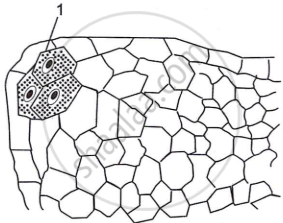Advertisements
Advertisements
Question
| Meena had grown Rose and China-rose plants in her garden. She collected pollen grains from China-rose plants and sprinkled them on the stigma of the Rose flowers, as she wanted to grow a hybrid variety of Rose. |
- Will this pollination give the desired results? Give a reason for your answer.
- What is geitonogamy? Why is it considered equivalent to cross-pollination in ecological context and self-pollination in genetic context?
Solution
- No. Rose and China rose are two separate species that do not belong in the same category. Pollen can only fertilise seeds belonging to the same species. As a result, Meena did not receive the desired fertilisation results.
- Geitonogamy is the transfer of pollen grains from one flower's anther to the stigma of another blossom on the same plant.
Geitonogamy, such as cross-pollination, involves a pollinating agent. Geitonogamy is a kind of self-pollination in which pollen is transferred from the anther of one flower to the stigma of another on the same plant.
APPEARS IN
RELATED QUESTIONS
Why is non-cyclic photo phosphorylation considered as a non-cyclic pathway?
With the help of diagrams, name and describe the different types of placentation seen in angiosperms.
If the haploid number of chromosomes in a plant species is 20, how many chromosomes will be
present in the cells of the shoot tip?
Define: Actinomorphic symmetry
Draw a neat labelled diagram of L.S. of anatropous ovule.
Discuss the role of cambium in the secondary growth of dicot stems.
Draw a neat labelled diagram of the vertical section of a monocot leaf.
The figure given below shows the early stage of the development of microsporangium.

Name the hypodermal cell labelled '1' which divides periclinally.
Draw a neat and well labelled diagram of T.S. of the mammalian ovary.
